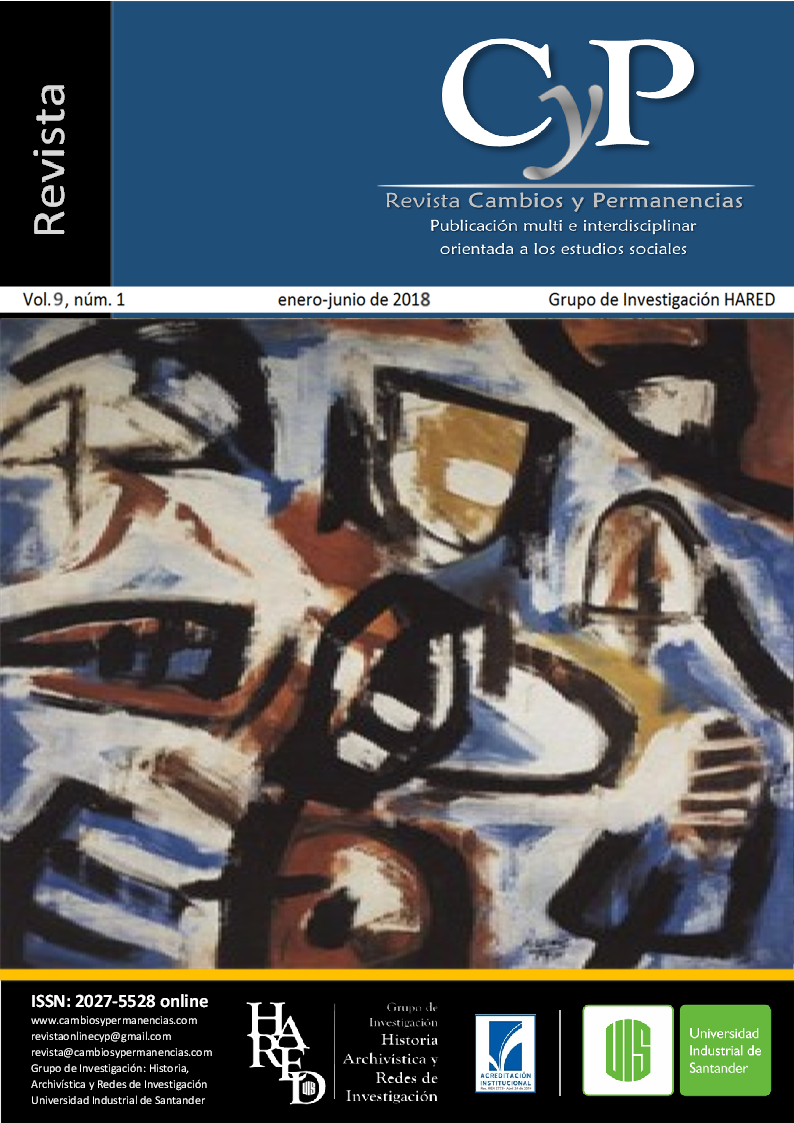Dossier: III Encuentro Nacional de Historia Oral y memoria
Historical Thinking and Construction of Life Stories of Boys and Girls in Situation of Special Educational Needs
Published 2018-06-01
Keywords
- Special Educational Needs,
- historical thinking,
- oral history
How to Cite
Borrego Trujillo, A., & Acosta Wilchez, A. (2018). Historical Thinking and Construction of Life Stories of Boys and Girls in Situation of Special Educational Needs. Cambios Y Permanencias, 9(1), 928–938. Retrieved from https://revistas.uis.edu.co/index.php/revistacyp/article/view/8471
Abstract
In this document, a theoretical and experiential account of the pedagogical project implemented in the Manuelita Saenz IED institution is carried out, which aimed to raise the historical thinking of students in special educational needs situation from the Oral History, making use of the construction of life stories. Various tools were used to collect information such as memory activation exercises, interviews, photographs and videos. Oral history is taken from two aspects, the first as a generator of historical thought and the second as a builder of identity.
Downloads
Download data is not yet available.
References
AA.VV. (2006). Rutas pedagógicas en la enseñanza de la historia en la educación básica en Bogotá, D.C. (UNAL). Programa de fortalecimiento de la capacidad científica en la educación básica y primaria. Bogotá: IDEP
Fontana, J. (2006) ¿Para qué sirve un historiador en tiempo de crisis? Bogotá: Ediciones pensamiento crítico.
Mariezkurrena, D. (2008): La historia oral como método de investigación histórica. Recuperado de: dialnet.unirioja.es/descarga/articulo/3264024.pdf
Pagès, J. (2009). El desarrollo del pensamiento histórico como requisito para la formación democrática de la ciudadanía. Reseñas de Enseñanza de la Historia, 7, pp. 69-91.
Torres, Cendales y Peresson. (1992). Los otros también cuentan. Elementos para la recuperación colectiva de la historia. Bogotá: Dimensión Educativa
UNESCO. (2009) Directrices sobre políticas de inclusión en la educación. Organización de las Naciones Unidas para la Educación, la Ciencia et la Cultura.
Valdeón, J. (2005). ¿Enseñar historia o enseñar a historiar? En: Enseñar historia. Nuevas propuestas. Barcelona: Fontamara colección.
Fontana, J. (2006) ¿Para qué sirve un historiador en tiempo de crisis? Bogotá: Ediciones pensamiento crítico.
Mariezkurrena, D. (2008): La historia oral como método de investigación histórica. Recuperado de: dialnet.unirioja.es/descarga/articulo/3264024.pdf
Pagès, J. (2009). El desarrollo del pensamiento histórico como requisito para la formación democrática de la ciudadanía. Reseñas de Enseñanza de la Historia, 7, pp. 69-91.
Torres, Cendales y Peresson. (1992). Los otros también cuentan. Elementos para la recuperación colectiva de la historia. Bogotá: Dimensión Educativa
UNESCO. (2009) Directrices sobre políticas de inclusión en la educación. Organización de las Naciones Unidas para la Educación, la Ciencia et la Cultura.
Valdeón, J. (2005). ¿Enseñar historia o enseñar a historiar? En: Enseñar historia. Nuevas propuestas. Barcelona: Fontamara colección.


